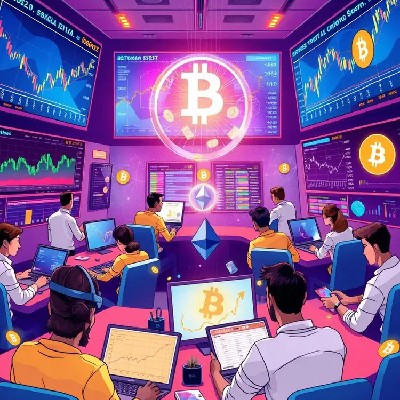
Relacionado con la moneda
Calculadora de precios
Historial de precios
Predicción de precios
Análisis técnico
Guía de compra de la moneda
Categoría cripto
Calculadora de ganancias

Precio de EthereumETH
¿Qué opinas hoy de Ethereum?
Precio actual de Ethereum
¿Cuál es el precio más alto de ETH?
¿Cuál es el precio más bajo de ETH?
¿Por qué fluctúa siempre el precio de ETH? ¿Qué factores afectan al rendimiento de los precios de ETH?
Predicción de precios de Ethereum
¿Cuándo es un buen momento para comprar ETH? ¿Debo comprar o vender ETH ahora?
¿Cuál será el precio de ETH en 2026?
¿Cuál será el precio de ETH en 2031?
Historial del precio de Ethereum (EUR)
 Precio más bajo
Precio más bajo Precio más alto
Precio más alto 
Información del mercado de Ethereum
Capitalización de mercado de Ethereum
Mercado de Ethereum
Holdings de Ethereum
Matriz de distribución de holdings de Ethereum
Holdings por concentración de Ethereum
Ethereum direcciones por tiempo en holding

Clasificación de Ethereum
Acerca de Ethereum (ETH)
Ethereum es la blockchain de segunda generación que permite la creación y el funcionamiento de aplicaciones descentralizadas (dApps) y contratos inteligentes . Fue creada en 2015 por Vitalik Buterin y se la conoce sobre todo por incorporar contratos inteligentes al mundo de la tecnología blockchain. El coste de cada transacción y ejecución de contrato inteligente en Ethereum se mide en gas.
Con el mayor ecosistema de dApps, Ethereum también sirve como la columna vertebral para muchas soluciones layer 2, como Arbitrum y Polygon , que proporcionan un procesamiento de transacciones más rápido y barato.
¿Qué es Ethereum (ETH)?
Ethereum es la segunda criptomoneda por capitalizaci ó n de mercado , después de Bitcoin. Fue desarrollada por el programador ruso-canadiense Vitalik Buterin y se lanzó oficialmente el 30 de julio de 2015. Ether, la criptomoneda nativa de Ethereum, impulsa el ecosistema haciendo posibles las transacciones, ejecutando contratos inteligentes y compensando a los nodos por recursos computacionales. El gwei es una unidad más pequeña de Ether: Un gwei equivale a 0,000000001 ETH (la milmillonésima parte de un ETH).
Ethereum se lanzó mediante una ICO (oferta inicial de monedas) entre el 22 de julio y el 2 de septiembre de 2014. Durante la ICO, los participantes podían comprar Ether (ETH) con Bitcoin (BTC) a un precio de 2.000 ETH por BTC, unos 0,31$ por ETH. La ICO recaudó más de 18 millones de dólares y se convirtió en uno de los eventos de recaudación de fondos más exitosos en el mundo de las criptomonedas. Desde su creación, Ethereum ha proporcionado una red descentralizada para que desarrolladores y usuarios construyan e interactúen con aplicaciones basadas en la blockchain sin depender de intermediarios centralizados.
¿Quién fundó la blockchain Ethereum?
Ethereum tuvo 8 cofundadores:
• Vitalik Buterin: El principal visionario autor del whitepaper de Ethereum.
• Gavin Wood: Escribió el Yellow Paper y creó el lenguaje de programación Solidity.
• Joseph Lubin: Fundador de ConsenSys, una empresa de tecnología blockchain.
• Anthony Di Iorio: Uno de los primeros inversores en Ethereum.
• Mihai Alisie: Ayudó a crear la Ethereum Foundation.
• Amir Chetrit: Uno de los primeros colaboradores que más tarde se retiró del proyecto.
• Charles Hoskinson: Cofundador de Ethereum que más tarde fundó la blockchain Cardano.
• Jeffrey Wilcke: Desarrollador clave de Go Ethereum (Geth).
En 2024, Vitalik Buterin es el único cofundador que sigue trabajando activamente en Ethereum. Los demás han pasado a dirigir o crear nuevas empresas blockchain.
Historia de Ethereum
2013: Vitalik Buterin, que fue cofundador de Bitcoin Magazine, propuso Ethereum. Imaginó una plataforma blockchain para aplicaciones descentralizadas (dApps) impulsada por contratos inteligentes.
2014: Ethereum se anunció en la North American Bitcoin Conference. Su ICO recaudó más de 18 millones de dólares.
2015: Ethereum lanzó su primera versión en vivo, Frontier, el 30 de julio, permitiendo a los desarrolladores crear dApps.
2016: Ethereum tuvo su primera actualización, Homestead, y se enfrentó al ataque de la DAO, lo que llevó a un hard fork que dividió la red en Ethereum (ETH) y Ethereum Classic (ETC).
2017: La actualización Byzantium mejoró la privacidad y la escalabilidad con nueve propuestas de mejora de Ethereum (EIP).
2019: Las actualizaciones Constantinople e Istanbul optimizaron los costes de gas, aumentaron la interoperabilidad y mejoraron la eficacia de la zero-knowledge proof.
2020: Ethereum lanzó la Beacon Chain e incorporó Proof-of-Stake (PoS) como parte de la hoja de ruta de Ethereum 2.0.
2021: Las actualizaciones Berlin y London Hard Fork optimizaron las comisiones e incorporaron EIP-1559, quemando una parte de las comisiones de transacción.
2022: Ethereum pasó a PoS con The Merge el 15 de septiembre, lo que redujo el consumo de energía en ~99,95%.
2023: Las actualizaciones Shanghai y Capella permitieron retirar ETH en staking y optimizar los procesos de PoS.
2024: Ethereum sigue centrándose en soluciones de escalabilidad, como el sharding, para mejorar la velocidad de las transacciones y reducir costes.
¿Cómo funciona Ethereum?
Ethereum es una plataforma blockchain descentralizada y de código abierto en la que los desarrolladores pueden crear y ejecutar contratos inteligentes, programas autoejecutables que impulsan una amplia gama de aplicaciones descentralizadas (dApps). Funciona en una red mundial de ordenadores (nodos) que procesan las transacciones y las registran en la blockchain, lo que garantiza la seguridad y la transparencia. La criptomoneda nativa de Ethereum, Ether (ETH), se usa para pagar las comisiones de gas de las transacciones, ejecutar contratos inteligentes y mantener la red mediante staking.
Tras la transición de Ethereum a Proof-of-Stake (PoS) en 2022, los validadores sustituyeron a los mineros para asegurar la red. Para convertirse en validador, es necesario colocar 32 ETH en staking, que se bloquean para ayudar a mantener la seguridad y la eficiencia de la red. A cambio, los validadores ganan incentivos por verificar y añadir nuevos bloques.
¿Qué hace único a Ethereum?
Con más de un millón de tokens desarrollados en su blockchain y miles de millones de dólares fluyendo a través de aplicaciones descentralizadas (dApps), Ethereum ha redefinido las posibilidades de la tecnología blockchain. Es compatible con tokens ERC-20 como USDT, LINK y BNB, muchos de los cuales se encuentran entre las principales criptomonedas por capitalización de mercado. Ethereum también impulsa el floreciente mercado de los tokens no fungibles (NFT), que permite la creación de activos digitales únicos para juegos, arte, etc. La actualización EIP-1559 ha añadido un elemento deflacionario a su ecosistema al quemar una parte de las comisiones de gas, lo que ha reforzado aún más su modelo económico.
Con el interés mundial reflejado en pares de trading como ETH a USD y ETH a EUR, Ethereum sigue liderando la configuración del futuro de la tecnología blockchain.
¿Cuál es la próxima actualización de Ethereum?
¿En qué consiste la actualización Ethereum 2.0?
Ethereum 2.0 es una importante actualización de la blockchain Ethereum, lanzada en fases que comienzan con la Beacon Chain en diciembre de 2020. El cambio más notable fue la transición de Proof-of-Work (PoW) a Proof-of-Stake (PoS) en The Merge, completada en septiembre de 2022. Este cambio redujo considerablemente el consumo de energía y mejoró la seguridad de la red.
Actualización Ethereum Pectra
La próxima gran actualización de Ethereum, Prague-Electra (Pectra), está prevista para principios de 2025. Mejorará la escalabilidad, la eficiencia y la facilidad de uso gracias a funciones clave como las transacciones por lotes (EIP-3074), el aumento de los límites de staking (EIP-7251) y la reducción del almacenamiento de nodos mediante Verkle Trees (EIP-2935). Más información sobre la actualizaci ó n Pectra y cómo mejorará tu experiencia con Ethereum.
¿Afecta la actualización de Ethereum al precio de ETH?
Las actualizaciones de Ethereum pueden influir en el precio de ETH, pero el efecto no siempre es directo. Las actualizaciones importantes, como The Merge en 2022, tienden a generar interés en el mercado y pueden dar lugar a fluctuaciones de precios, incluidos cambios en el precio en tiempo real de Ethereum. Estas actualizaciones pretenden mejorar la escalabilidad, la seguridad y la eficiencia energética de la red, lo que puede considerarse un avance positivo para las perspectivas a largo plazo de Ethereum. Sin embargo, los cambios de precios también se ven influidos por otros factores, como las condiciones generales del mercado y el sentimiento de los inversores, por lo que el impacto de las actualizaciones en el precio de ETH no siempre es predecible.
Para obtener información en tiempo real, muchos traders siguen el precio actual de ETH junto con los gráficos de Ethereum para comprender mejor las fluctuaciones a corto plazo y el comportamiento del mercado.
¿Cuáles son los posibles casos de uso de Ethereum?
Ethereum tiene una gran variedad de casos de uso gracias a su flexibilidad y naturaleza descentralizada:
• Finanzas descentralizadas (DeFi): Servicios financieros sin intermediarios (por ejemplo, préstamos, exchanges).
• Contratos inteligentes: Acuerdos automatizados en sectores como seguros, inmobiliario y legal.
• Tokens no fungibles (NFT): Propiedad digital de arte, coleccionables y medios de comunicación.
• Organizaciones Autónomas Descentralizadas (DAO): Organizaciones gobernadas por la comunidad.
• Gestión de la cadena de suministro: Seguimiento transparente de las mercancías y verificación de su autenticidad.
• Gaming: Modelos Play-to-Earn (P2E) y activos tokenizados en los juegos.
• Verificación de identidad: Gestión segura de identidades digitales y datos personales.
¿Dónde puedo mantenerme al día de las noticias sobre Ethereum?
Si estás buscando las últimas actualizaciones de Ethereum y noticias cripto, Bitget es el lugar ideal para ti. Las Noticias de Bitget te mantienen al tanto con actualizaciones en tiempo real, tendencias del mercado y los últimos acontecimientos en el mundo cripto.
¿Quieres aprender más? La Academia de Bitget es el lugar perfecto, ya que ofrece guías sencillas, consejos de trading y conocimientos tanto para principiantes como para traders expertos.
¿Qué le espera a Ethereum?
De cara al futuro, el desarrollo de Ethereum continúa centrándose en mejorar la escalabilidad, la seguridad y la descentralización:
• Sharding: Una importante actualización que dividirá Ethereum en partes más pequeñas (shards) para procesar las transacciones en paralelo, aumentando la velocidad y reduciendo las comisiones.
• Soluciones layer 2: Tecnologías como Optimism y Arbitrum seguirán reduciendo los costes por transacción y mejorando la escalabilidad.
• EIP-4844 (Proto-Danksharding): Incorporará nuevos tipos de transacciones para reducir aún más las comisiones de gas y mejorar la disponibilidad de los datos.
• Mejoras en la EVM: Las mejoras en la máquina virtual de Ethereum aumentarán el rendimiento y permitirán aplicaciones más complejas.
• Optimizaciones PoS: Las mejoras en curso en el sistema Proof-of-Stake de Ethereum aumentarán la seguridad, la descentralización y los incentivos de staking.
Comienza a invertir accediendo a la p á gina de trading de Ethereum en Bitget . El precio de Ethereum se actualiza y está disponible en tiempo real en Bitget.
ETH a la moneda local
- 1
- 2
- 3
- 4
- 5
Cómo comprar Ethereum(ETH)

Crea tu cuenta gratuita en Bitget

Verifica tu cuenta

Convierte Ethereum a ETH
Tradea futuros perpetuos de ETH
Después de registrarte en Bitget y comprar tokens de USDT o ETH exitosamente, puedes empezar a hacer trading con derivados, incluidos futuros de ETH y trading con margen para aumentar tus ingresos.
El precio actual de ETH es de €1,664.48, con un cambio en el precio en 24 horas del -1.12%. Los traders pueden obtener ganancias yendo en long o en short en futuros de ETH.
Únete al copy trading de ETH siguiendo a traders elite.
Noticias de Ethereum



Nuevos listados en Bitget
Comprar más
Preguntas frecuentes
¿Cuál es el precio actual de Ethereum?
¿Cuánto vale 1 Ethereum (ETH)?
¿Cuándo empezó Ethereum?
Bitcoin vs. Ethereum: ¿Cuál es la mejor compra?
¿Cuál es el suministro total de tokens de Ethereum?
¿Cuál es el precio previsto de Ethereum para el 2025?
¿Cuál es el precio actual de Ethereum?
¿Cuál es el volumen de trading de 24 horas de Ethereum?
¿Cuál es el máximo histórico de Ethereum?
¿Puedo comprar Ethereum en Bitget?
¿Puedo obtener un ingreso estable invirtiendo en Ethereum?
¿Dónde puedo comprar Ethereum con la comisión más baja?
¿Dónde puedo comprar Ethereum (ETH)?
Sección de video: verificación rápida, trading rápido

Bitget Insights




Activos relacionados




























Datos sociales de Ethereum
En las últimas 24 horas, la puntuación del sentimiento en redes sociales de Ethereum fue 3.2, y el sentimiento en redes sociales en cuanto a la tendencia del precio de Ethereum fue Alcista. La puntuación global de Ethereum en redes sociales fue de 234,519,440, que se sitúa en el puesto 3 entre todas las criptomonedas.
Según LunarCrush, en las últimas 24 horas, se mencionó a las criptomonedas en redes sociales un total de 1,058,120 veces, y se mencionó al token Ethereum con un ratio de frecuencia de 16.34%, lo que lo sitúa en el puesto entre todas las criptomonedas.
En las últimas 24 horas, hubo un total de 394,780 usuarios únicos debatiendo sobre Ethereum y un total de 172,877 menciones sobre Ethereum. Sin embargo, en comparación con el periodo de 24 horas anterior, el número de usuarios únicos Aumento del un 4%, y el número total de menciones Aumento del un 20%.
En Twitter, hubo un total de 6597 tweets mencionando a Ethereum en las últimas 24 horas. Entre ellos, el 30% son optimistas respecto a Ethereum, el 9% son pesimistas respecto a Ethereum y el 60% son neutrales respecto a Ethereum.
En Reddit, hubo 2118 publicaciones mencionando a Ethereum en las últimas 24 horas. En comparación con el periodo de 24 horas anterior, el número de menciones Disminución del un 8%.
Panorama social completo
3.2